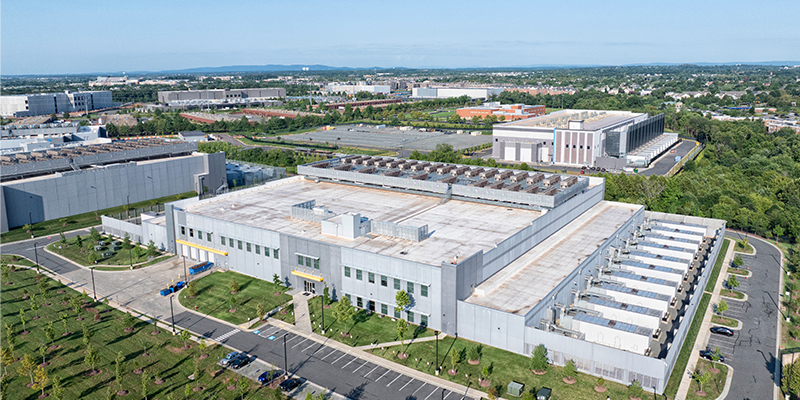By Jonathan Rollins
Until relatively recently, proximity dictated where data centers were built.
“Data centers, for latency reasons, had to be located near certain customers, certain population hubs. So, we saw these markets emerge where there was a lot of data center concentration [such as] Northern Virginia, Dallas, Phoenix,” explained Elissa Wilson while moderating a panel discussion this week at CRE.Converge in Toronto.
But the artificial intelligence-driven surge in demand over the past two years has opened opportunities in new markets where power is still abundant and grids are less constrained.
“What this means is that the traditional model of where and how data centers are built is fundamentally changing. … Market analysis shows a clear trend toward more remote locations,” said Wilson, a partner at Vorys, Sater, Seymour & Pease, LLP (Vorys), where she regularly represents hyperscalers and developers of data center projects.
Nathan Regan, the economic development strategic negotiator for Google LLC, said the minimum size footprint that Google needs to be able to develop a data center is 150 acres, but if given access, it will take upward of 600 acres. Google looks at various factors when determining its interest in secondary markets. “It’s a combination of energy, water access, and economic development incentives that really put the recipe together for us to be able to build somewhere,” Regan said.
Drew Goldsmith is vice president of digital infrastructure at Blue Owl Capital; in that role, he is focused on site selection and development in emerging U.S. data center markets. Wilson asked what metrics he uses as an investor to distinguish between a true secondary market opportunity and a market that isn’t yet viable for data centers.
“For us, the table stakes are power availability and cost, regulatory framework, workforce, [and] land availability and costs,” he said. “But what we’re really focused on is scalability. … We’re looking for somewhere that we can find multiple sites and really scale into a full platform in that market.”
Alliant Energy is an investor-owned utility serving about 1 million electric and natural gas customers across Iowa and Wisconsin. Until a few years ago, its largest power customers were big agricultural and bioprocessing companies. “We really weren’t in the data center space,” said Kiley Miller, manager of economic development and data center services at Alliant Energy. “About six years ago, we had our first significant inquiry from a data center. In fact, it was Google. But at that point, we weren’t price-competitive because that was pre-[widespread use of] artificial intelligence and there was just a different metric on what you needed to price for your power. Skip forward to today, and we’ve got three data centers under construction in our service territory.” All three are on sites that Alliant assembled about a decade ago for industrial development.
Miller added that while Alliant Energy remains open to doing business with hyperscale data centers, it is also receiving more inquiries about much smaller edge data centers and colocation data centers.
Scott Ziance, a partner at Vorys, leads two teams that focus on site selection and economic development incentives across the U.S. When it comes to identifying potential emerging markets for data center development, he recommends looking at places that have undergone recent public policy changes. He explained that two taxes [sales use tax and tangible personal property tax] are significant disincentives to investing in data centers because the facilities are “constantly spending hundreds of millions of dollars to refresh their servers. So having a sales use tax that doesn’t have a robust exemption or having a tangible personal property tax, you need to address both of those to have a really good investable market.”
When Wisconsin eliminated its tangible personal property tax, he said, “Big surprise: It started getting some interest from data centers. Kansas recently enacted a sales and use tax exemption, so maybe that will get some attention.”
Regan said that Google, just like its competitors, is continually evaluating secondary markets for data center development. “We’re all trying to find the best path,” he said. “Over the past couple of weeks at Google, we’ve made some big changes in where we’re looking for new sites. The industry is moving so quickly.”

This post is brought to you by JLL, the social media and conference blog sponsor of NAIOP’s CRE.Converge 2025. Learn more about JLL at www.us.jll.com or www.jll.ca.







